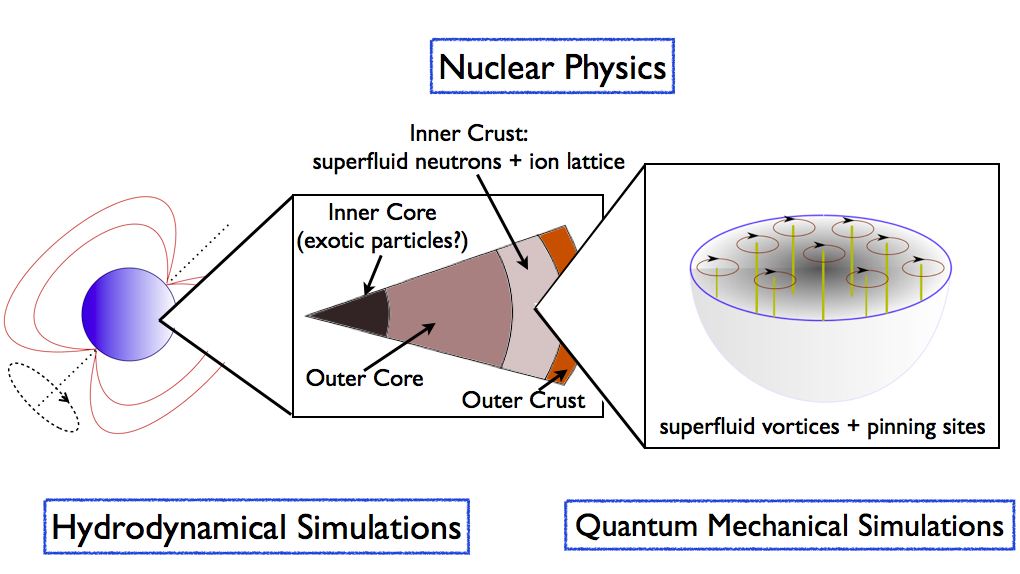Research
My main interest is in modelling superfluid neutron stars and their gravitational wave emission
Neutron Stars (NSs) are one of the most exciting nuclear physics laboratories in the universe. The density in the core of these very compact objects (comprising roughly one and a half solar masses in a ten kilometer radius) can exceed the nuclear saturation density by an order of magnitude and offers the only direct probe of the state of matter at low temperatures and high densities. On the other hand terrestrial experiments, such as heavy ion colliders, will only ever allow us to investigate the state of matter at high temperatures and low densities. The study of neutron stars is thus complementary to ongoing experimental efforts and allows us to probe an entirely different sector of the QCD phase diagram.

Furthermore the temperatures of these stars are well below the Fermi temperature for the different constituents and so large scale superfluid components are expected in the interior. This changes the dynamics of the system considerably, as the superfluid component can flow relative to the “normal” component of the star to which it is only very weakly coupled. In fact a superfluid rotates by forming an array of quantised vortices, which then mediate an interaction, known as Mutual Friction, which provides the coupling to the rest of the star.
I have worked on many of the analytic and numerical techniques that are required to model multi-component superfluid NSs, including effects such as the presence in the core of hyperons or deconfined quarks and elasticity of the superfluid vortex array, magnetic fields and an elastic crust.
Gravitational wave mechanisms: the r-mode instability and ‘mountains
I have applied many of these techniques to investigate Gravitational Wave (GW) emission mechanisms for rotating NSs. These signals could be detected by current and next generation GW observatories, such as LIGO, VIRGO or the planned Einstein Telescope. The main mechanism that could be at at work is a deformation, or ‘mountain”, on the star that causes its shape to not be spherical. If the deformation is not axisymmetric the stellar rotation will lead to a time varying quadrupole and to the emission of gravitational waves. Another mechanism that may be at work in a rotating NS is that of a fluid mode of oscillation growing to large amplitudes and leading to a time varying quadrupole. In particular the best candidate for this mechanism is the so called r-mode, a toroidal mode of oscillation for which the restoring force is the Coriolis force. This mode is interesting as GW emission can drive it unstable, making it grow to large amplitude unless viscosity can damp it on a shorter timescale.
Radio Pulsar glitches
Finally I am interested in the study of pulsar glitches, sudden jumps in the otherwise steadily decreasing frequency of radio pulsars (which are thought to be magnetised NSs). These “glitches” are thought to be direct manifestations of a large scale superfluid component in the NS interior. As the superfluid is only weakly coupled to the normal component it can store angular momentum and release it suddenly if the two components re-couple. Models of such phenomena can ultimately be used to set constraints on the properties of dense matter not only with observations from current radio telescopes, but also making use of high quality data which will soon be available from next generation telescopes such as LOFAR and in the future the SKA.